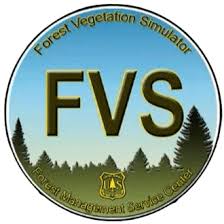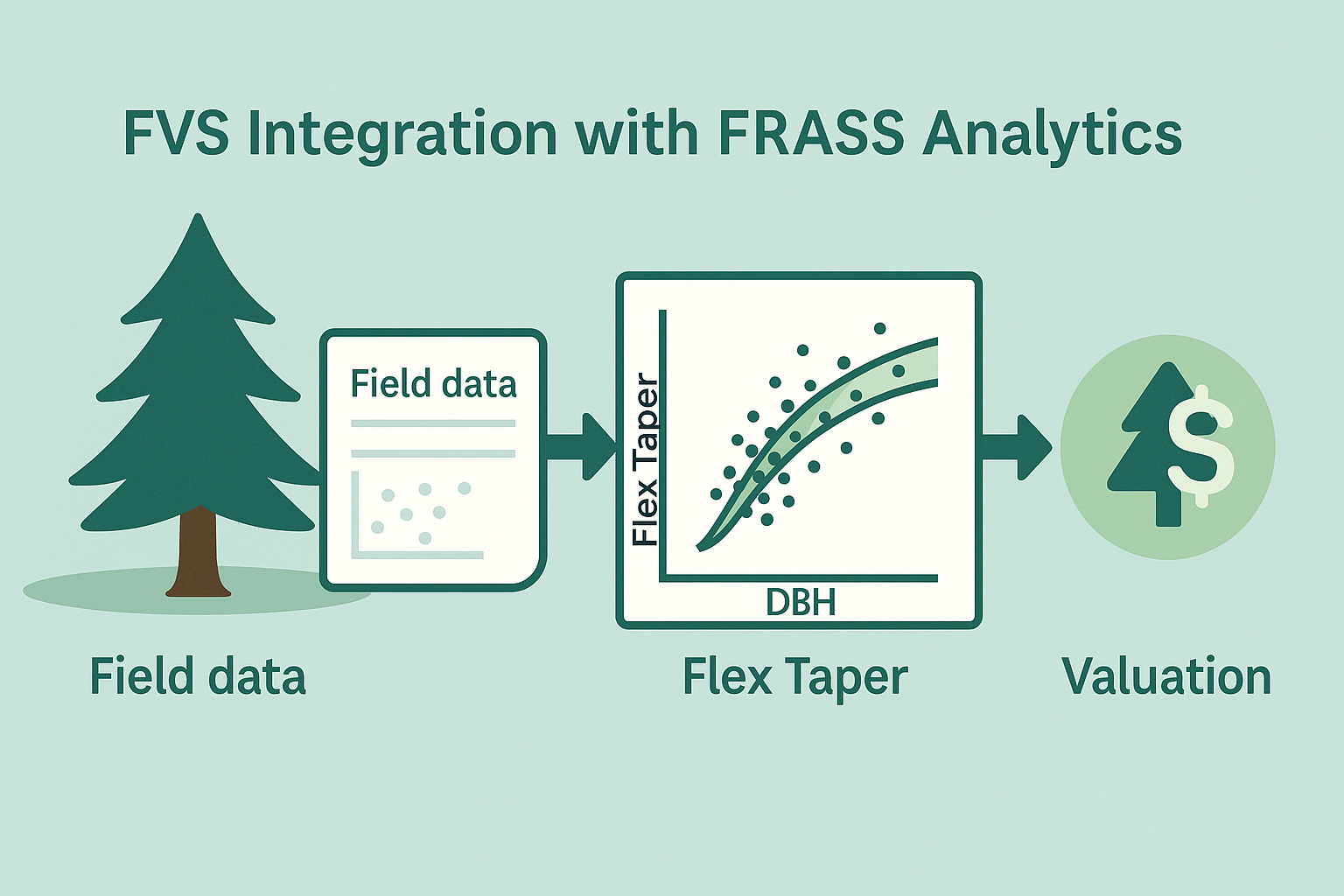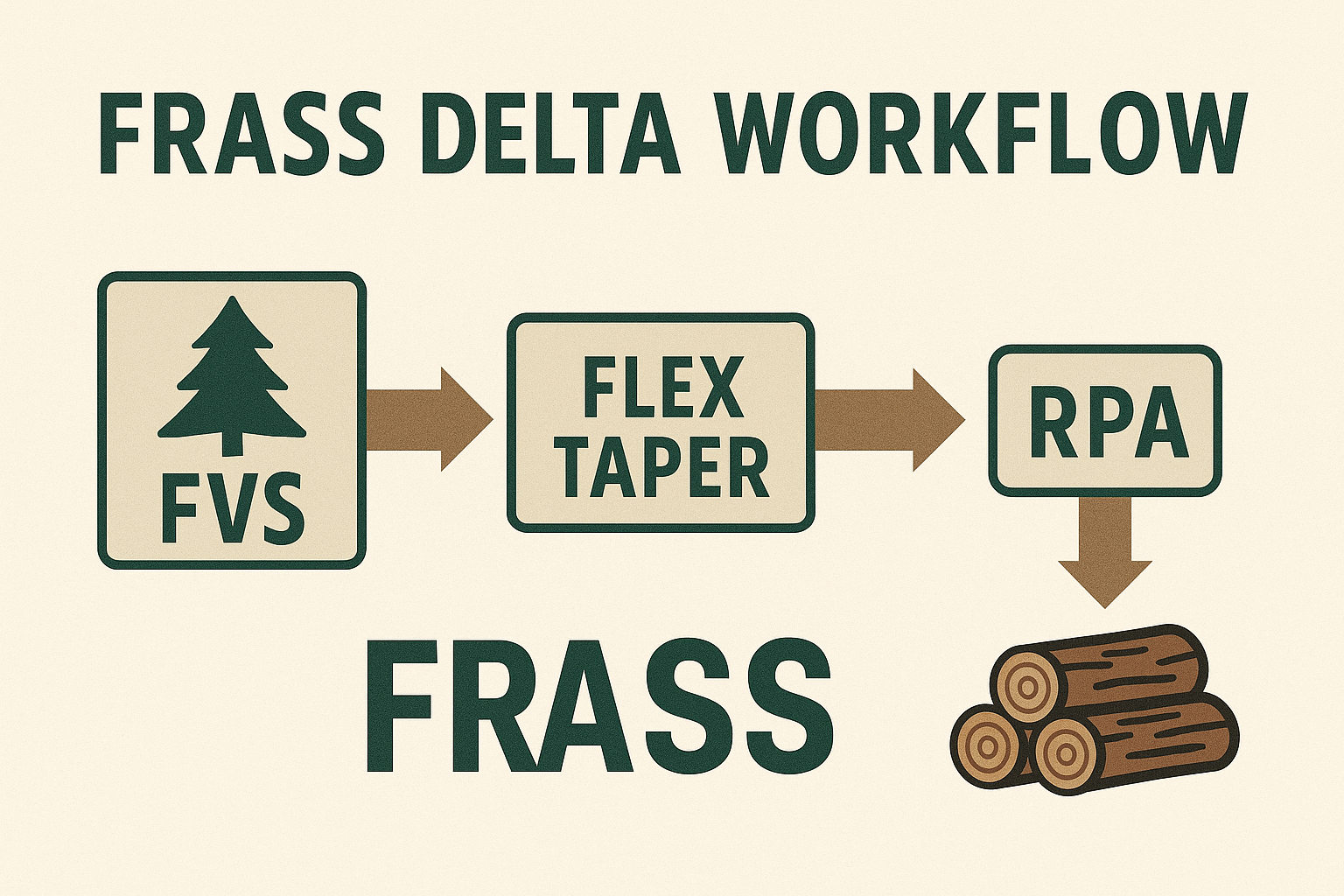Biometrics → FVS Integration → Flex Taper δ Workflow → RPA Forecast
The complete analytical chain within FRASS Analytics — connecting biological measurement, geometric modeling, and economic valuation into a seamless, defensible framework for forestland appraisal and management.
FRASS unites four core strengths: Biometrics, the Flex Taper Model, Real Price Appreciation (RPA) Forecasting, and Wetware—the trained judgment of foresters and appraisers.
Together they form a single, verifiable workflow: take what is measured in the forest and translate it into transparent, defensible value through time.
Traditional forest models have long relied on generalized taper curves and static equations that treat each tree as an ideal cylinder or cone. The Flex Taper Model changes that assumption. It calibrates each tree’s geometry so that its predicted cubic-foot volume is reconciled with what growth models such as FVS report. In doing so, it builds a direct bridge between biometric measurement and economic valuation—the point where physical form becomes financial return.
This integration marks a turning point for forest analytics. For decades, agencies and researchers have refined models to estimate growth, mortality, and yield, yet the translation from stem form to log value has often remained inconsistent across regions, standards, and scaling rules. FRASS + Flex Taper closes that gap by aligning biological truth with economic consequence. Each tree is treated not as a theoretical average, but as a measurable asset that grows, competes, and compounds through time.


Every FRASS analysis begins with what is real on the ground: species, diameters, heights, crown ratios, density, site index, and treatment history. Models such as FVS extend this structure into the future, but FRASS keeps the assumptions visible and testable so that no result floats free of its measured origins.

The Flex Taper Model (Patent Pending) converts biometric structure into realistic stem geometry. It reconciles growth-model volumes with adaptive taper to produce log-by-log distributions by sort and grade, ensuring FRASS calculates value where it is realized—in delivered logs, not abstract averages.
The RPA Forecast Tool separates inflation from genuine price movement and projects Real Price Appreciation or Devaluation by species, grade, and market.
- Builds forecasts from historic delivered log prices,
- Models real (inflation-adjusted) price behavior,
- Aligns price forecasts with the log sorts defined by Flex Taper.
When FRASS tests alternative harvest timings, it does so against these real-term expectations, not wishful prices.
FRASS amplifies professional judgment rather than replacing it. Wetware is the experience of foresters, analysts, and appraisers: which stands are operable, which constraints are absolute, which risks are acceptable, and which portfolios reflect the owner’s real objectives.
Those decisions become explicit parts of the workflow, not unspoken assumptions.
When biometrics, taper, pricing, and judgment operate separately, each can be questioned. The FRASS Δ Workflow links them so that every assumption is visible and every result traceable.

The outcome is uncommon in forest valuation: a documented, auditable bridge from what was measured to why this value is justified.